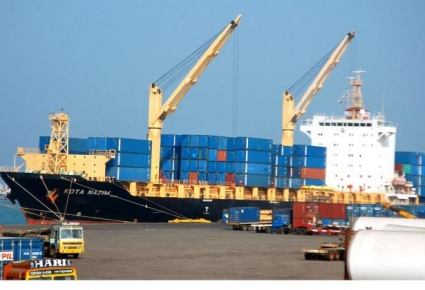On July 16, 2018, V. O. Chidambaranar Port received the inaugural consignment of 80 TEUs of e-sealed export containers from Dalmia Cements, Tiruchirappalli by rail.
The unloading of the containers was inaugurated by Mr N. Vaiyapuri, Deputy Chairman, V.O. Chidambaranar Port, Tuticorin and Mr S. Sivakumar, Additional Commissioner, Customs, Tuticorin. Officials of CONCOR, Dalmia Cements, Terminal Operators, and officers of the port participated in the inaugural function organised at the port.
Dalmia Cements, Tiruchirappalli has proposed to export around 9,400 TEUs per annum to Sri Lanka through V. O. Chidambaranar Port through the newly-introduced rail service. Earlier, cement exported by the company through the port arrived at the port by road. During the last financial year, Dalmia Cements shipped around 2,400 TEUs of containers through V. O. Chidambaranar Port, and the newly-introduced rail service by CONCOR will facilitate an additional volume of around 7,000 TUEs.
The e-sealed containers, on arrival at the port by rail, shall be offloaded in the area behind transit sheds I and II. Upon production of Shipping Bills for export, the Customs will verify the details of the container with the RFID reader. After compliance with all mandatory verification requirements, ‘Let Export Order’ (LEO) will be issued by the Customs Department.
Mr Vaiyapuri, while addressing the gathering, stressed that the “vision to offer customers a seamless end-to-end service resonates with our drive for higher standards of service and flexibility for our customers”. He also stated that the strategic priority of V. O. Chidambaranar Port is to increase the volume of containers moved by rail to and from the port.
During the last financial year, the Port handled approximately 1.3 lakh tonnes of cement and, during the current financial year up to June 2018, it handled approximately 30,000 tonnes of cement by general cargo vessels.
One of the major advantages that rail offers is reduced traffic congestion on roads, assisting in reducing environmental and social impact. Greater fuel efficiency is another factor in rail’s favour. The volumes moved by rail also reduce congestion at the wharf, the release added.






